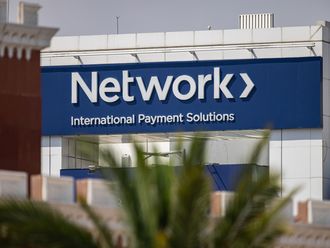Dubai: The Saudi Arabian Monetary Agency (Sama) raised banks’ maximum allowable loan-to-deposit (LTD) ratio to 90 per cent from 85 per cent last month, increasing the vulnerability of the country’s banking system.
“The increased LTD limit will allow banks to continue expanding credit while limiting price competition for deposits and their need to use expensive long-term borrowing, which supports banks’ profit. However, this measure is credit negative because it relaxes an important safeguard in the conservative prudential framework that we consider a strength of the Saudi banking system,” said Olivier Panis, Senior Credit Officer at Moody’s.
Deposits are Saudi banks’ primary source of funding and accounted for 78 per cent of total assets and 90 per cent of non-equity funding as of December 2015. Funding via long-term borrowing has historically been very limited in Saudi Arabia given the abundance of non-interest-bearing deposit flows.
This year, Moody’s expect Saudi banks’ funding to be constrained by muted deposit growth. Therefore, the solution for some banks to fund credit growth this year under an 85 per cent LTD ratio constraint would have been to compete for fixed deposits on price and to raise long-term borrowing.
Sama’s decision to increase the maximum allowable LTD ratio to 90 per cent will allow some banks to continue expanding their loan portfolio and top-line revenues. By reducing banks’ need to raise more fixed deposits and long-term borrowing, it will also moderate the negative effect that tightening liquidity and rising interest rates are having on Saudi banks’ cost of funding.
“Sama’s action, which is intended to induce credit-fuelled economic growth, comes amid weakening fundamentals. We expect prolonged low oil prices and lower government spending to negatively affect loan performance, increasing nonperforming loans to 2.5 per cent this year from 1.4 per cent as of September 2015. We expect the relaxed LTD ratio will further expose banks to funding volatility, which stems from high deposit concentrations,” said Panis.
Although the rating agency expects loan growth to moderate to around 5 per cent in 2016, softer regulation on banks’ funding will widen the gap between credit and deposit growth.
Sama’s conservative prudential framework has allowed Saudi banks to build very high funding and liquidity metrics in recent years. Despite the recent relaxation in LTD Saudi banks’ current 81 per cent LTD ratio compares favourably with the 89 per cent average for Gulf GCC banks and 93 per cent for global peers.
Saudi banks have already implemented Basel III standards and Moody’s estimate their liquidity coverage ratio at 200 per cent and net stable funding ratio at 130 per cent, both very high levels. “Although Sama’s LTD increase will not challenge those metrics, banks may become less selective about loan growth, gradually eroding their liquidity buffers and funding stability,” said Panis.










